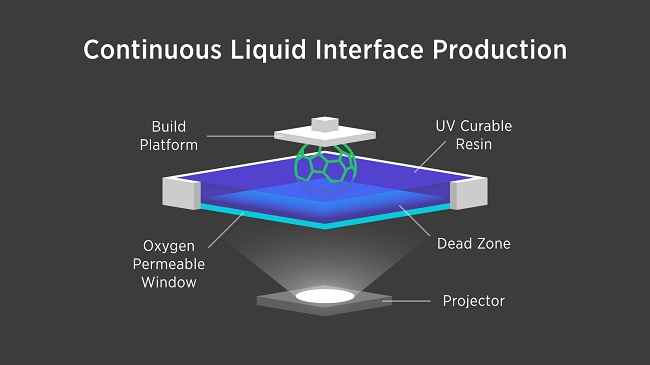The polymer resin ball created using the CLIP method
A new 3D printing method shown at a TED conference in Vancouver has caused quite a stir after the designers claimed they can make objects in a fraction of the time it would take a standard 3D printer.
Under the current method of production from 3D printers, a layer of resin is placed one on top of the other until it forms a particular shape that, depending on the size, usually takes a matter of hours to create.
With the method developed by Carbon3D, however, it is a much more scientifically challenging, but easily usable, process that shines light from a projector at the machine’s base up through an oxygen-permeable window and into a pool of UV curable resin.
When the light and oxygen reacts with the resin and pulled from the pool by the build platform, it solidifies to form the shape the user wants which, as the company’s CEO and co-founder Dr Joseph DeSimone showed to the TED audience, can create a plastic ball in 10 minutes, rather than 10 hours.
“Current 3D-printing technology has failed to deliver on its promise to revolutionise manufacturing,” said DeSimone. “Our CLIP technology offers the game-changing speed, consistent mechanical properties and choice of materials required for complex commercial quality parts.”

How the Carbon3D model works. Image via Carbon3D
Come with me if you want to print
According to the BBC, DeSimone and his team were inspired to create their CLIP printing method after witnessing the sci-fi classic Terminator 2: Judgment Day which featured the T-1000 that rose from the ground in its liquid metal state to form its normal structure after being heated to extreme temperatures.
In terms of its benefits over conventional 3D printers, DeSimone said, the CLIP method can create objects between 25 and 100 times faster than what is available on the market today and could, one day, create objects 1,000 times faster.
Despite only working with polymer materials at the moment, the company is looking at using other materials in the near future with potential uses including medical tools in the meantime.
Printing enthusiasts will be happy to know that Carbon3D expects to have a commercially available model out within a year but no indication of price is yet available.